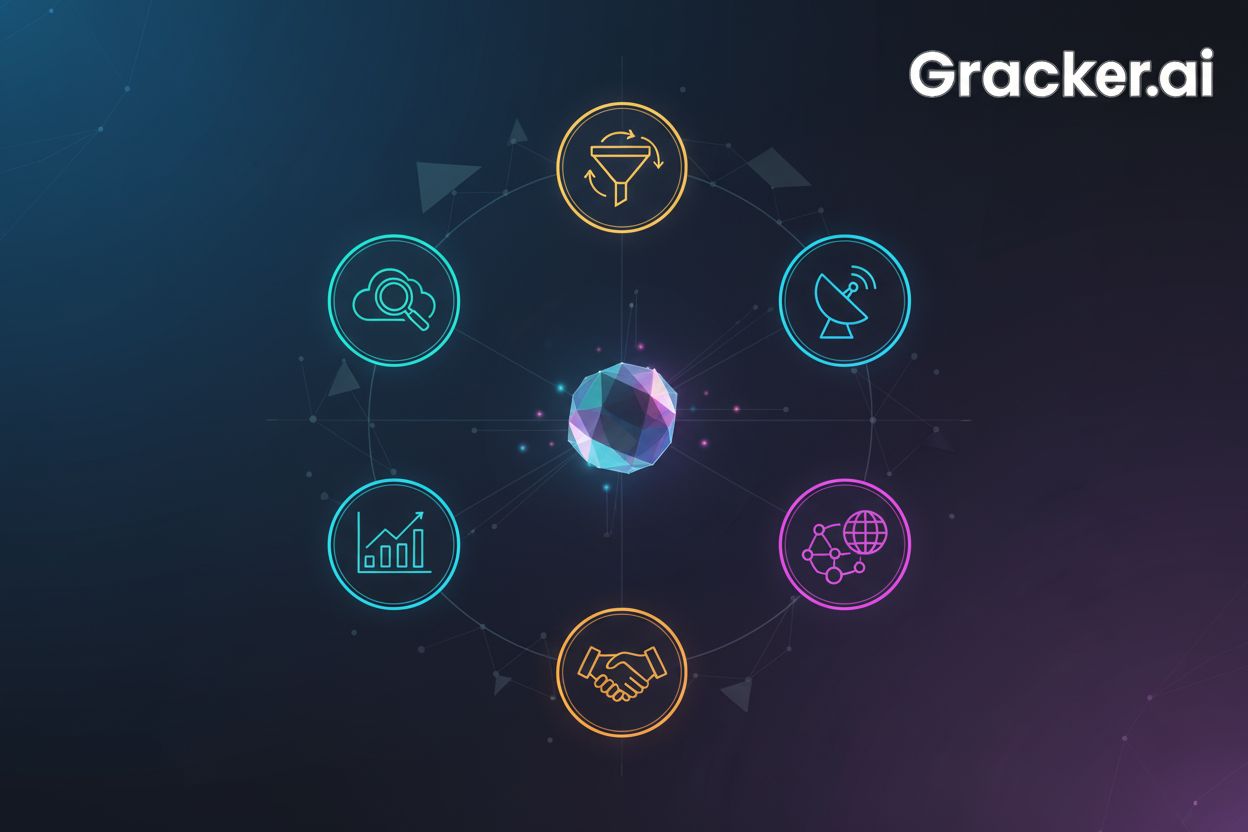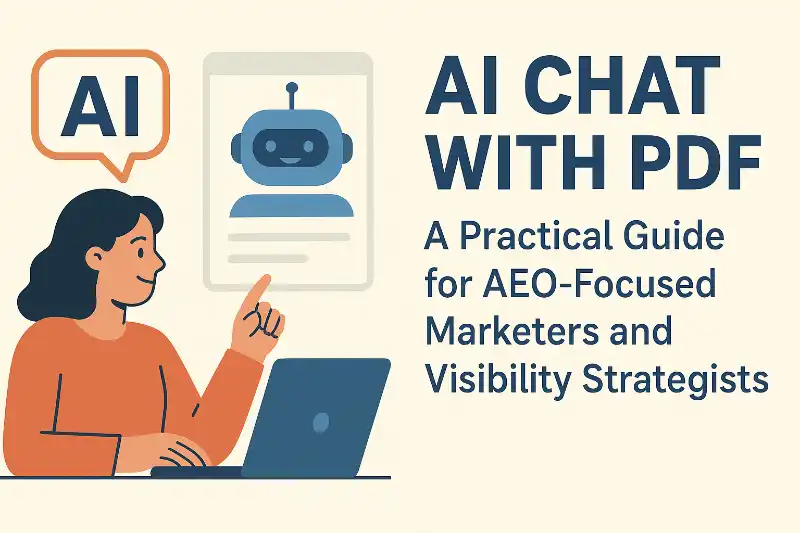Understanding Generative Engine Optimization: Current Insights
TL;DR
What is Generative Engine Optimization (GEO)?
Alright, let's dive into this whole Generative Engine Optimization (GEO) thing. Did you ever notice that when you ask ai a question, it just knows? It's kinda freaky, right? Turns out, there's a whole new way to think about content so that ai picks your stuff.
So, what exactly is GEO? It's not just slapping keywords everywhere like back in the day. It's about making your content ai-friendly. Think of it like this:
- AI-first: GEO is all about optimizing your stuff so that AI algorithms can easily understand it and use it in their responses. It's for answer engines, not just search engines!
- Visibility Boost: The goal is to get your brand cited by AI, so you appear in those AI-generated results that are becoming so popular.
- Adapting to the Machines: It's ensuring your content aligns with how AI algorithms actually work, which is different than just targeting keywords.
GEO helps get your content in front of folks using the latest AI tools. (Generative Engine Optimization (GEO): How to Win in AI Search) Next up: why this even matters in the first place!
GEO vs. Traditional SEO: Key Differences and Similarities
Okay, so you're probably wondering, "GEO versus SEO—is this just alphabet soup, or does it actually matter?" Well, buckle up, because it kinda does. They're like cousins, not twins, if that makes sense.
Both Generative Engine Optimization (GEO) and traditional SEO are trying to get you noticed. But they go about it differently, see?
- They both want to give the user helpful, accurate stuff. Think about it: nobody wants garbage results, whether it’s from a regular search or an AI answer. If you're a healthcare provider, that means clear, easy-to-understand explanations of medical terms.
- E-E-A-T matters for both. Google's gonna care if you're an expert, and so will AI. If HubSpot ranks for "crm" on Google, it's likely to show up in AI's recommendations too! (The New SEO Playbook: How AEO, GEO, and HubSpot Help You ...)
- Keywords still give context, but how you use them changes. You can't just stuff keywords anymore.
Here's where it gets interesting. SEO is all about ranking, while GEO wants to be cited.
- GEO focuses on answering natural language questions, while SEO chases keyword rankings. Think about how you ask AI a question versus typing something into Google.
- SEO wants clicks, GEO wants to be quoted. It's a totally different game.
- GEO needs content to be easily scannable – lists, headings, the works. AI needs to grab the info fast.
So, what's next? Well, understanding why GEO is so important... that's the next piece of the puzzle!
Why is GEO Important for B2B SaaS Growth?
Okay, so you might be wondering why all the fuss about GEO for B2B SaaS, right? Well, lemme tell ya, it's kinda a big deal. It's not just about getting clicks anymore; it's about showing up where your ideal customers are actually looking.
- High-Intent Users: People who are turning to AI for answers, they're usually further along in their buying journey. They're not just browsing; they're actively seeking solutions. For example, imagine a healthcare company using AI to research the best patient management system for their needs. GEO ensures your B2B SaaS appears when these high-intent users are actively searching for solutions.
- First-Mover Status: Get in early, and you’re the trusted source. It's like being first to a hot new market, except instead of land, you're planting your flag on AI's "go-to" list!
- Credibility Boost: Being cited by AI? It's basically a digital stamp of approval.
So, how do you future-proof your B2B SaaS visibility, exactly? That's what we'll tackle next.
How Does Generative Engine Optimization Work?
Okay, so you're probably wondering how Generative Engine Optimization (GEO) goes from buzzword to, like, actually working, right? It's not just about throwing AI some keywords and hoping for the best.
Clear, scannable stuff is key. Think headings, bullet points—the works. AI needs to grab info fast, and this is because AI models are trained to process information efficiently, making scannable content easier and quicker for them to parse.
Authority, authority, authority. Drop in expert quotes, stats, and cite credible sources. Show AI you know your stuff. This is crucial because AI algorithms assess E-E-A-T by looking for these explicit signals of expertise and trustworthiness.
Write like a human, but for a robot. Sound natural, but stay professional. It's a weird balance, I know. To strike this balance, focus on using clear, concise language, avoiding jargon where possible, and structuring sentences in a way that flows naturally while still being precise.
Make it citation-worthy. Create content AI wants to reference. If it's boring, AI won't care.
ChatGPT loves details. Give it the comprehensive, well-sourced content it craves. It's all about showing you're an expert.
Perplexity is all about the source credibility. Yeah, source credibility is everything here. Don't even try to fake it. Emphasize the importance of recent and verifiable data for Perplexity.
Google AI Overviews? A mix of old and new. Traditional ranking still matters, but AI smarts are in the mix now too. This means that Google AI Overviews combine traditional ranking signals with AI's ability to synthesize information, requiring content creators to focus on both established SEO practices and AI-friendly content.
Next up: how to implement these principles for your B2B SaaS!
Implementing Generative SEO Strategies for Your B2B SaaS
Alright, so you're ready to jump in and actually do some generative SEO, huh? It's not as scary as it sounds, promise. Think of it as just regular SEO, but with a robot friend in mind.
First things first: you need to control what AI says about your B2B SaaS. Make sure the messaging is consistent everywhere.
- Audit those mentions: See what's already out there. What are people saying on review sites? On social media? What comes up when you google your brand?
- Craft clear statements: What problems does your software really solve? Who's your dream customer? Nail that down.
- Answer all the questions: Create a killer FAQ that tackles everything folks might ask. For AI optimization, structure your FAQs with clear question phrasing and concise, informative answers.
Forget just "CRM software"; think, "what is the best CRM for small healthcare practices?" Get conversational, y'know?
- Long-tail is king: Target those longer, question-based phrases that people actually say when they're talking to AI.
- Map those questions: Figure out the different ways people ask the same thing.
AI wants the real deal, not fluff. Think E-E-A-T, baby! Experience, Expertise, Authoritativeness, and Trustworthiness.
- Show, don't just tell: Share real results, drop expert quotes, and back it all up with solid data. Make sure your content proves you know your stuff.
- Cover everything: Go deep. Don't just skim the surface; answer every possible question.
- Use clear headings: AI needs to know what's up.
Once you've nailed these steps, don't forget to track how you're doing! Are you showing up in AI searches?
Best Practices for Optimizing Content for Different AI Search Engines
Okay, so you're probably thinking, how do I make my content sing to these AI overlords, right? It's not a one-size-fits-all kinda thing, turns out. Each AI search engine has its own quirks; it's like learning a new language for each one.
ChatGPT: This one loves the deep dives! Give it in-depth explanations and actionable advice, and throw in some expert insights to sound smart. Think of it like writing a really good textbook chapter--but less boring, hopefully.
Perplexity: Source credibility is everything here, people. Back up your claims with recent stats and verifiable data. If you can't prove it, Perplexity ain't interested, y'know?
Google AI Overviews: This is more of a mix between old-school SEO and the new AI stuff. Prioritize content that's already ranking well, but make sure it also gives concise answers and has local relevance. To ensure local relevance, focus on incorporating location-specific keywords, local data, and testimonials where appropriate.
Next up: avoiding some common, very avoidable mistakes...
Common Mistakes to Avoid with Generative SEO
It's easy to fall into traps with generative SEO, trust me. A little keyword stuffing here, a little neglecting user intent there... and bam!
- Content gone wild? Overstuffed keywords are so 2010. Think natural, like you're talking to a friend. For example, focus on conversational queries instead of just keywords.
- Tech no-no's: Slow loading speeds? AI will hate that. This is detrimental because slow loading speeds negatively impact AI optimization by hindering AI's ability to crawl and process content efficiently, affecting user experience signals.
- Strategic oops: Don't ignore regular SEO, okay? As mentioned in the "GEO vs. Traditional SEO" section, it's all about balance!
Let's get into measuring and tracking your GEO efforts.
Measuring & Tracking the Success of GEO Efforts
Want to know if your GEO efforts are paying off? It's not just about vanity metrics, but real, actionable insights you can use. So, how do we know if all this AI-optimizing is actually working?
- Track that AI citation rate. How often is AI actually pulling your content? A higher number means you're doing something right. For instance, if you're a retail SaaS, are you being cited when AI recommends e-commerce platforms?
- Nail down brand context accuracy. Is AI describing your offerings correctly? It's not just about being mentioned, but accurately portraying your value. Imagine a finance company being recommended for "budgeting" when they specialize in "investment strategies." To measure and ensure this accuracy, monitor AI-generated results for your brand and compare them against your official messaging.
- Conversion quality is key. Are users from AI platforms actually converting? If they’re further along in the buying journey, you should be seeing real sales.
- Share of voice matters. How does your presence compare to competitors in AI results? It's important to see what the other players are up to in terms of their AI visibility and how your brand stacks up.
Next up, let's dive into what tools to use to measure this stuff...
Future Trends in Generative Engine Optimization
Okay, so you're rocking the GEO thing—but what's next? It's kinda like asking what the future of the internet is, but, y'know, more focused. Here's a peek into the crystal ball:
- Multi-modal's gonna be huge. Think voice search, image recognition, even video search. It's not just about typing anymore; it's about showing and telling. To optimize for these multi-modal formats, GEO principles need to adapt by focusing on descriptive alt text for images, clear transcripts for videos, and natural language phrasing for voice queries.
- Platforms are getting picky. Optimizing for ChatGPT is not the same as for Perplexity, which is not the same as for Google AI Overviews. It's like learning a new language for each one. A retail SaaS might need different content strategies for each AI platform to maximize visibility. The fundamental differences lie in their preferred content formats, emphasis on source citation, and integration of traditional SEO signals.
- Freshness is key. Real-time data is where it's at. AI needs the latest and greatest, not stale old news. Think about financial services; AI needs up-to-the-minute stock prices and market analysis, not last year's report. GEO strategies can address this by implementing dynamic content updates and ensuring data sources are current.
- Personalization is coming, like it or not. AI is gonna tailor recommendations based on user data. A marketing manager might see AI-driven content suggestions that are totally different from what a digital marketer sees because their needs are different. GEO will need to evolve by creating content that can be easily adapted and personalized by AI based on user profiles and contexts.
So, that's the future, or at least a blurry glimpse of it. Up next, we'll wrap things up with some final thoughts.
Conclusion: Balancing SEO and GEO for Long-Term Success
Okay, so you've been grinding on SEO, right? But AI's changing everything.
- SEO and GEO? More like partners now. GEO's an extension of SEO, not a replacement. Don't ditch those keywords, just make them AI-friendly. An "AI-friendly keyword" is one that's naturally integrated into conversational queries and reflects user intent, rather than just being a standalone term.
- Think about how your content comes across. Helpful stuff that shows expertise always wins. It’s about standing out, not blending in.
- Capture the market by understanding that AI's the now—and the future. Gotta adapt now.
So, yeah, balance is key for long-term success.





